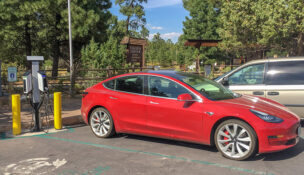Organizers who mobilized voters can tell you why Harris lost Arizona
By Ethan Alcock, Aubrey Hirst, and Carmina Diamente//December 13, 2024//[read_meter]
Organizers who mobilized voters can tell you why Harris lost Arizona
By Ethan Alcock, Aubrey Hirst, and Carmina Diamente//December 13, 2024//[read_meter]
Over 1.5 million Arizonans voted for President-elect Donald Trump, despite his 34 felony convictions, history of sexual assault, mishandling of the Covid pandemic, etc. In the weeks since, some commentators have simply blamed Trump voters for his resurgence. However, if we really want to understand why Vice-President Kamala Harris lost, it is crucial to understand why her message didn’t resonate with so many people.
We spent every day for four months before the election talking to potential voters. In total, our team registered 2,700 Arizonans to vote, and helped 4,600 people make a plan to vote. Unfortunately, our conversations with undecided voters showed that Democrats were poorly set up to win this election from the start.
Undecided voter 1
Voter: “I’m not sure who to vote for.”
Organizer: “Can I ask what your biggest concern is?”
Voter: “Well, I’m kind of leaning toward Trump. I feel like it’s really hard to get by with inflation and everything, but I don’t know. I’m kind of thinking about not voting …”
– A conversation with a young woman at Pima Community College.
We had many conversations like this. Above all, the issue that resonated most with undecided voters was the economy. In fact, economics was consistently the only issue they could name where politics tangibly affected their lives, even if they couldn’t name either candidate’s economic proposals. And they all agreed: the economy was not working for them.
For many undecided voters, Trump’s message of lowering costs and reducing inflation resonated, as did the blame he placed on the Biden administration, globalization, and immigrants. In response, Harris offered beneficial economic policy proposals for the working class, but very few voters were aware of these.
To counter Trump’s message, we tried to direct people’s anger toward corporations and the wealthy, who profit off of our basic needs. This resonated deeply, especially among young voters. Then it was simple to tie that to the billionaire, union-busting slumlord Donald Trump.
While Harris did include some of this economic messaging in her campaign, it largely tapered off toward the election. Rather than campaigning with Liz Cheney and highlighting abstract issues like “protecting democracy,” Harris could have directly called out corporate wrongdoers that undecided voters have a real connection to: corporate landlords, food monopolies, and for-profit universities, for example. Candidates need to show how they will impact voters’ lives for the better, or voters will stay home. For many Arizonans, Harris failed to do so.
Undecided voter 2
Voter: “I’m not voting, I don’t like the candidates.”
Organizer: “Did you know there’s actually a lot more than president on the ballot? For example, we have propositions where you can vote directly on law changes, not on politicians.”
Voter: “Oh, I didn’t know that. Do you have to vote for president to vote on those? …”
– A conversation with a Hispanic woman at a bus transit center.
One of the many surprises of the election was the margins by which progressive ballot measures such as abortion access and minimum wage increases succeeded in states that voted for Trump. In Arizona, the abortion access proposition passed with 62% of the vote, while Trump won with 52%. How can someone who voted for Trump and for abortion access reconcile those views?
Whenever we talked to someone who didn’t want to vote for president, as in the conversation above, our go-to talking point was voting on the propositions. That’s because people were often genuinely curious about voting directly on policies that affected their lives, rather than voting for politicians. Almost every single undecided voter held a deep mistrust of politicians, especially ones seen as part of the establishment. In the example above, the voter implied she might go so far as to vote on propositions but not for president. Many other voters vote for both, but have much more trust in propositions than in politicians.
If Democrats want to benefit from the popularity of these progressive measures, they need to start picking fights with the establishment forces that caused the crisis of abortion bans and low wages in the first place, rather than coming off as managers of the crisis. Apathetic voters simply will not trust someone who is seen as part of the establishment.
Where do we go from here?
Enough voters decided to take another chance on Trump in 2024 to swing the election in his favor in Arizona and around the country. But our conversations showed that many people who voted for him were not in full support of his extreme agenda. Many were convinced by the narrative he spun around tangible issues affecting their lives, outweighing any concerns they may have had about him.
Many of these voters can be won back, and in fact already support some progressive policies. If Democrats want to win these voters back, they need to speak to the challenges that affect voters’ day-to-day lives. They need to call out the establishment forces, both corporations and politicians, who have created these problems. And they need to listen to grassroots leaders and canvassing teams, whose job it is to listen to voters.
Ethan Alcock, Aubrey Hirst, and Carmina Diamente worked as voter-registration and get-out-the-vote organizers in Tucson with NextGen America.


















